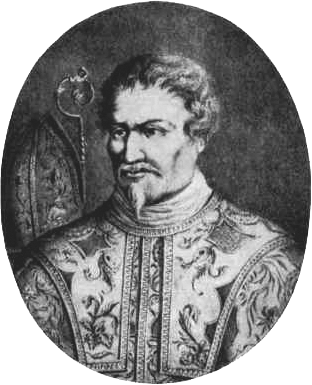
I had only rudimentary contact with classical music before I began majoring in it in college. My education consisted largely of complete immersion in the style and repertoire of J.S. Bach.
My freshman theory book was by a man named McHose and consisted of statistical summaries of how chords progressed in the harmonized chorales of Bach. "58% of the time a II chord proceeds to a V chord." This sentence is completely made up, but you get the idea. Picture hordes of graduate students counting these. We learned to play chorales on the piano.
And we sang Bach. As an undergraduate I performed solos from the Matthew Passion, the B Minor Mass, the Christmas Oratorio and various cantatas. My idea of the Baroque is Bach.
When I studied history later, I realized that the contrapuntal technique of Bach came from the Renaissance, or what became known in the Baroque as the prima pratica. The counterpoint of the Renaissance continued on throughout the Baroque, while the seconda pratica grew up simultaneously.
The prima pratica came from the Netherlands (Josquin and Lasso) while the seconda pratica (Caccini and Monteverdi) came from Italy. Bach wrote in all the forms of his era and achieved his own dense and complicated amalgamation of the two Baroque styles.
Once at the beginning of this blog I wrote about the missing classic Italian composers. In my education they were lists of names. Now one of these names, Agostino Steffani, appears in Cecilia Bartoli's project to revive him. Steffani is a middle Baroque Italian completely immersed in the seconda pratica. This consists of a radical thinning of the texture, generally to bass and melody but seldom exceeding two upper voices over a bass line and chords. Bach and Steffani are different worlds, but with his trio sonata-like texture of two counterpointing upper voices Steffani may be closer to the Baroque ideal.
There are no fugues. My brain expects choral music to include fugues. There are hints of counterpoint in the choral sections, but nothing as complex as a fugue.
He seems to understand well the emotional requirements of his music. The religious music is very somber. I am having difficulties adjusting my expectations. It is important to realize that a criticism of this style is a criticism of the Italian middle Baroque, a style until recently we have known virtually nothing about. I think it is best to silence the din of expectation, to relax and enjoy it. In fact, the entire process of learning to love something new begins with calming the din of expectation.
In this uncritical state of mind it relates less backward to the Renaissance than forward to the Rococo. For the Italians expression of the text is paramount. I would imagine that he has been ignored all these years because it has been German musicologists who decided who would be emphasized from the composers of the past. They prefer a high level of complexity. They, too, have been strongly influenced by Bach.
I hear Italian sweetness and ornate style in Steffani, all of it a pleasure to hear. For the people of the time they preferred Italian sweetness and virtuosity to German intellect. Italian music swept the world, and at long last we are getting to hear it for ourselves.
The singers on the Stabat Mater album are Nuria Rial (Soprano), Cecilia Bartoli (Mezzo), Daniel Behle (Tenor), Franco Fagioli (Countertenor), Julian Prégardian (Tenor), Salvo Vitale (Bass). The one that sounds like a particularly assertive Bartoli is Fagioli. The singers are not identified by category on the album. When Bartoli is singing, we hear her always present charm.
The interpretation of this work is unusually respectful and circumspect. Solo or duet with bass is his preferred texture. Music on catholic texts tends to fall into two categories: the performance types which are primarily theatrical in nature (B-minor mass, Missa Solemnis, Verdi requiem, etc.) and works of a serious religious nature intended to enhance worship. This is one of the latter category. It is not difficult to imagine this as part of an actual religious service. However, apparently this is the work that Steffani wrote as a gift for the Academy of Ancient Music in London.
I have put off writing this because this is tough. I am used to the wild and theatrical Henry Purcell whose music cannot be distinguished by its intended use. Steffani doesn't seem like any musician I know which isn't a basis for criticism. It's a beautiful and deeply spiritual album.
#ad







No comments:
Post a Comment